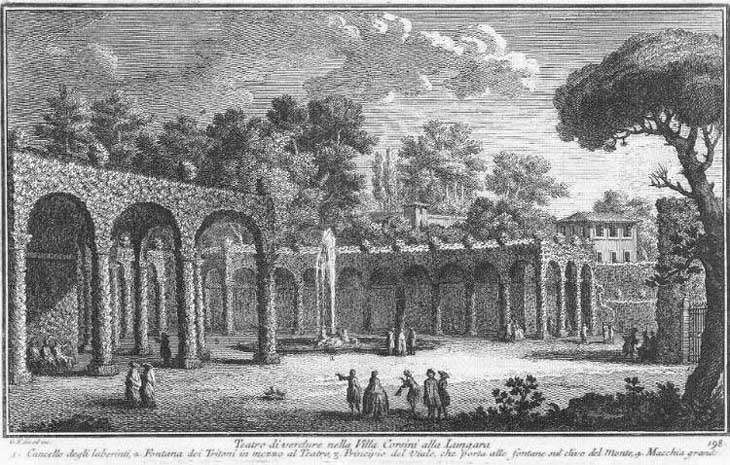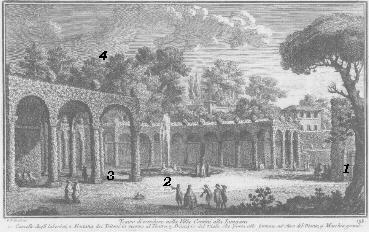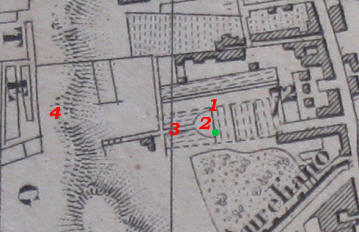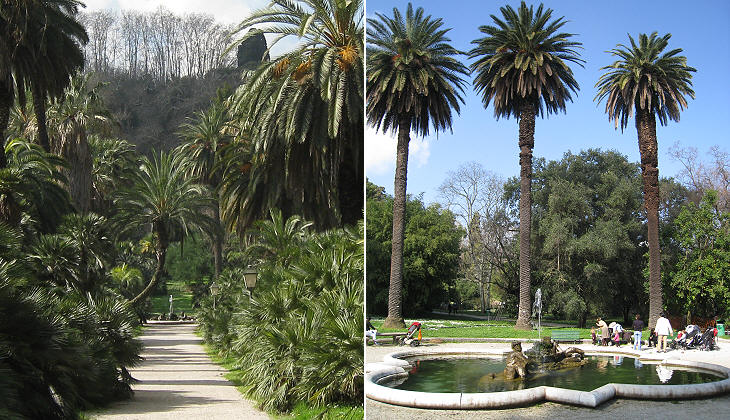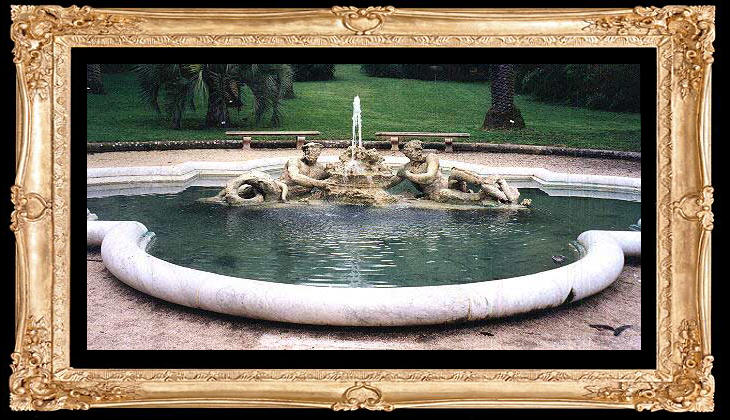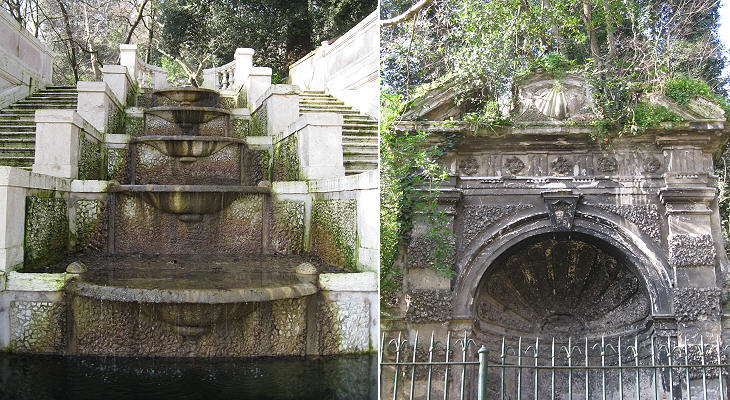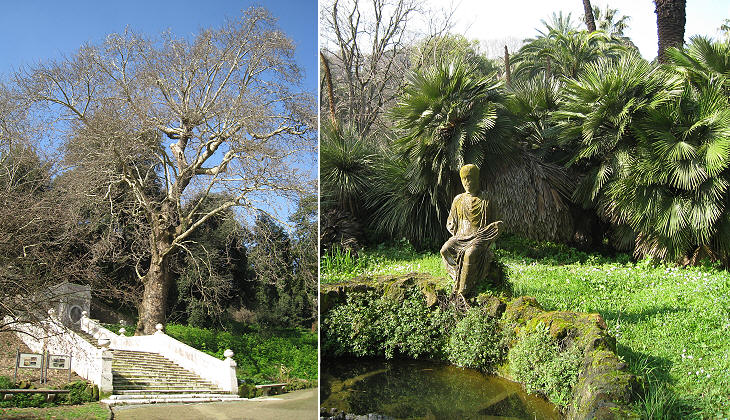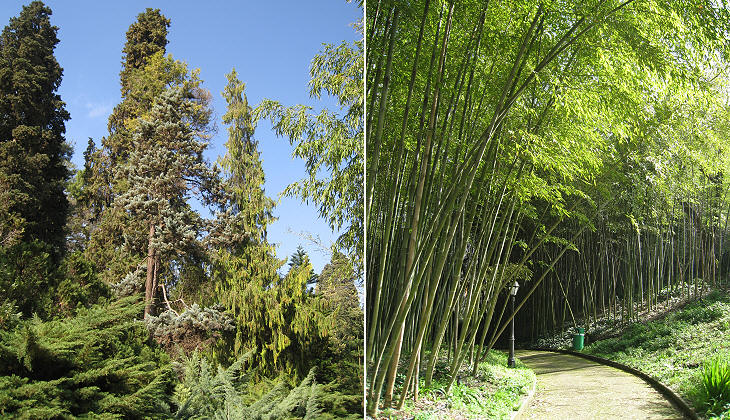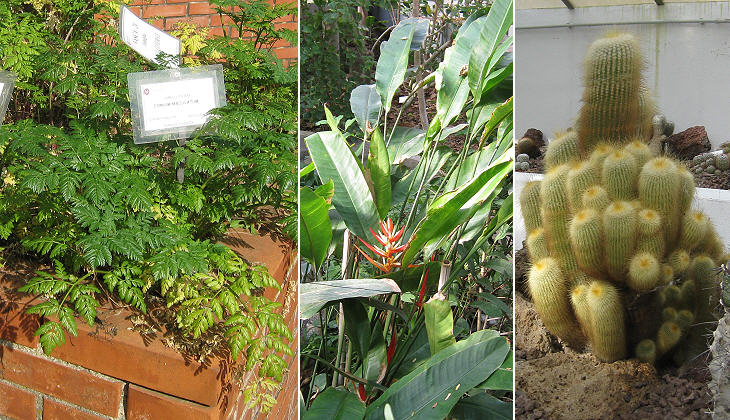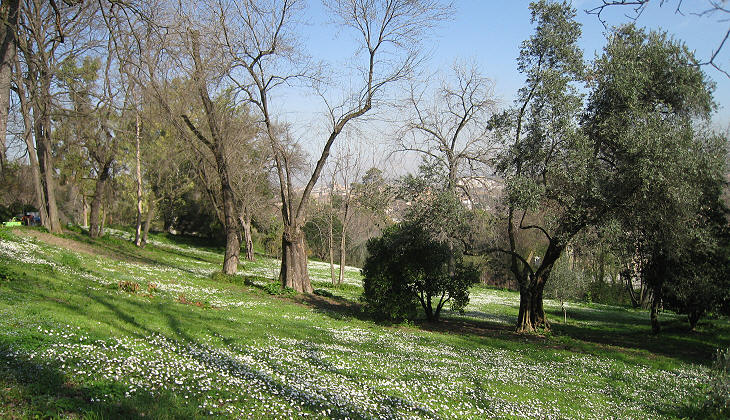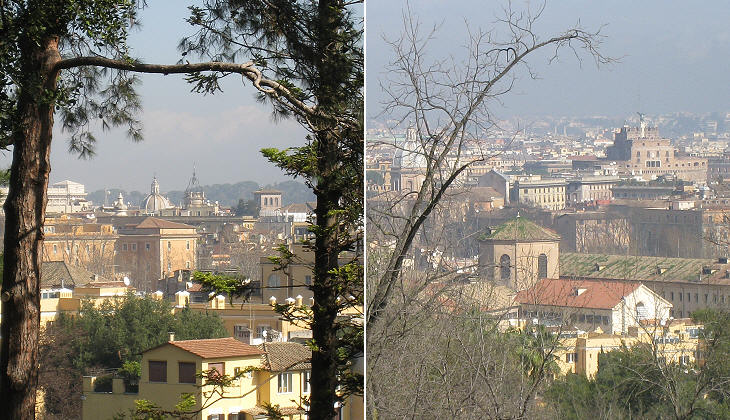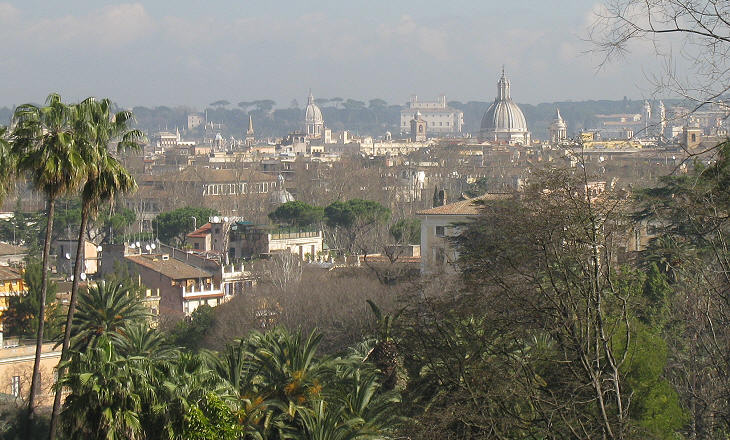  What's New! Detailed Sitemap All images © by Roberto Piperno, owner of the domain. Write to romapip@quipo.it. Text edited by Rosamie Moore. Page revised in March 2010. | Villa Corsini alla Lungara (Book 10) (Map D3) (Day 6) (View E7) (Rione Trastevere) In this page: The plate by Giuseppe Vasi Today's view Villa Corsini Orto Botanico Upper Gardens The Plate (No. 198)
This etching by Giuseppe Vasi is a rare view of the "green theatre" of the gardens behind Palazzo Corsini alla Lungara; in the 1748 map of Rome by Giovan Battista Nolli there is no evidence of the theatre and of the fountain; a map by Paul Letarouilly drawn in ca. 1850 shows the fountain but neither the theatre nor the maze which according to Vasi was located to the right of the fountain. By the end of the XVIIIth century Italian gardens were no longer fashionable even in Italy and it is likely that the Corsini felt that the burden of their very expensive maintenance was not justified. The view is taken from the green dot in Letarouilly's 1748 map here below. In the description below the plate Vasi made reference to: 1) Entrance to the maze; 2) Fontana dei Tritoni; 3) Alley leading to the fountains in the upper part of the Villa; 4) Wood on the Janiculum.
In 1883 the Italian Government bought Palazzo Corsini; the Botanical Garden of Rome was moved from the gardens of Palazzo Salviati to those of Palazzo Corsini; this explains why the baroque fountain is today surrounded by luxuriant palms. Villa Corsini
Cardinal Neri Corsini, nephew of Pope Clement XII, bought the palace and the gardens in 1736. He was a man of great culture and wealth and he wanted his residence to be comparable to those of other great cardinals of the past such as Villa Borghese and Villa Medici, yet notwithstanding the enthusiastic description by Giuseppe Vasi, who dedicated one of his books to Cardinal Neri Corsini, the new gardens were relatively scarce of fountains and works of art.
Similar to what had been done in Villa d'Este, Ferdinando Fuga, the architect in charge of redesigning the garden, exploited the slope of the Janiculum for a series of cascading fountains which had at their top a niche where we know there was a statue; the niche however belongs to an earlier period, when Villa Corsini belonged to the Riario; it is decorated with roses, a heraldic symbol which can also be seen in Palazzo Riario or della Cancelleria.
The vegetation of the Botanical Garden provides an unusual setting for some of the remaining elements of the XVIIIth century gardens.
In 1543 in Pisa and in 1545 in Florence Luca Ghini, an Italian botanist, founded the first botanical gardens; that of Florence was called Giardino dei Semplici because the medicaments directly obtained from a plant were called semplici (simples). Pope Alexander VII founded a botanical garden behind Acqua Paola and in 1820 Pope Pius VII decided to move it to Palazzo Salviati. The Botanical Garden of Rome can hardly be compared to those existing in some other cities, however the mildness of the climate of the Eternal City allows many different plants to grow in the open air, whereas elsewhere they are kept inside greenhouses.
Upper Gardens
The Botanical Garden occupies most of the eastern slope of the Janiculum; in the past Villa Corsini reached the peak of the hill where there was a small casino; it was pulled down to make room for the Monument to Giuseppe Garibaldi.
By gradually walking along the alleys leading to the upper part of the gardens, the views progressively include a larger section of the city.
Next plate in Book 10: Casino del Giardino Farnese sul Monte Gianicolo Next step in Day 6 itinerary: Palazzino e Giardino Farnese |
